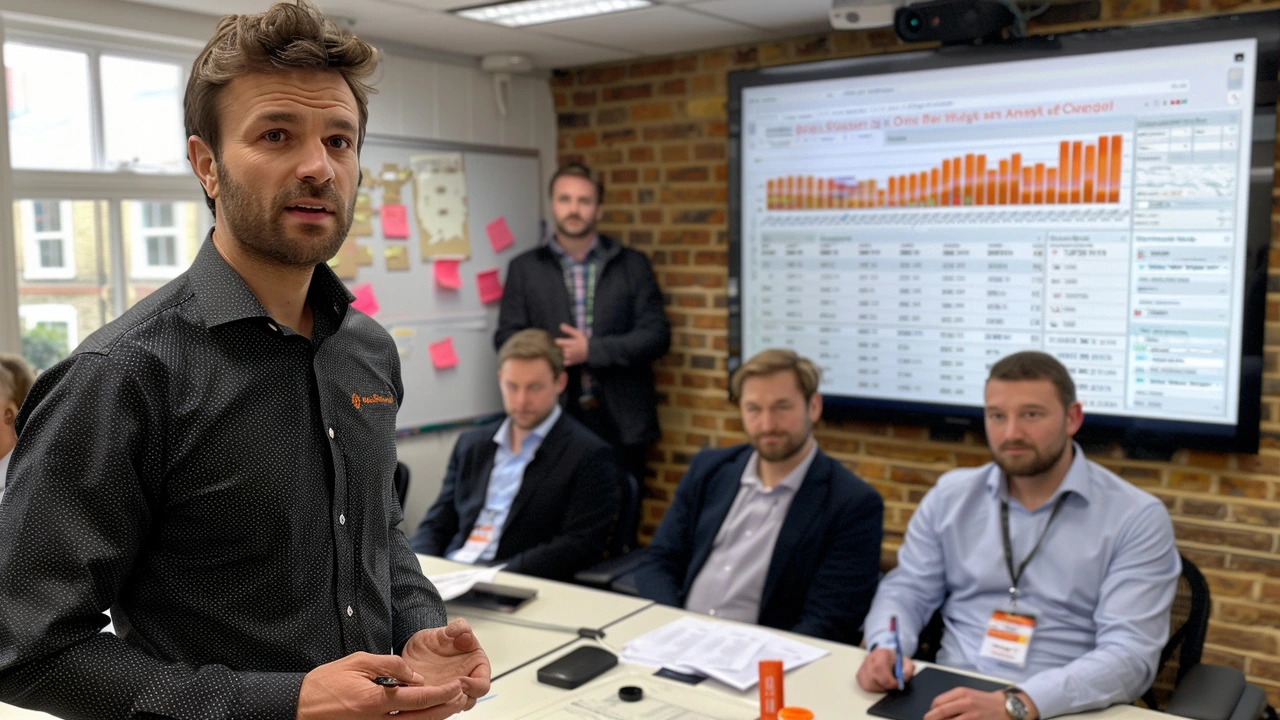Digital Marketing Aire Roa

ChatGPT: Revolutionizing Digital Marketing with AI-Powered Tools
The world of digital marketing is ever-evolving, and AI-powered tools like ChatGPT are setting new standards. This article delves into how ChatGPT can be leveraged for various marketing tasks, its impact on the industry, and practical tips for integration. Discover the transformative potential of ChatGPT in boosting engagement and precision in digital strategies.

Unlocking ChatGPT's Potential for Boosting Your Digital Marketing Strategy
In the ever-evolving landscape of digital marketing, embracing innovative tools like ChatGPT can redefine your strategy and outcomes. ChatGPT, with its language generation capabilities, opens up numerous possibilities for enhancing content creation, customer service, and personalized marketing efforts. By understanding how to effectively implement ChatGPT in your marketing strategy, you can significantly improve engagement, efficiency, and ultimately, your bottom line. This article explores the compelling ways ChatGPT can be harnessed to boost your digital marketing, offering practical advice and insights that can be applied to businesses of all sizes.

Cutting-Edge Online Marketing Strategies for Thriving in Today's Digital Ecosystem
In an era where the digital landscape is continuously evolving, businesses must adapt innovative online marketing strategies to stay ahead. This article delves into groundbreaking approaches including leveraging SEO techniques, harnessing the power of social media, and personalizing content for the audience. By embracing these tactics, businesses can enhance their online presence, engage more effectively with their target demographic, and achieve remarkable growth in the digital realm.

ChatGPT: Revolutionizing Digital Marketing Strategies
In the fast-paced digital world, ChatGPT emerges as a groundbreaking tool for marketers aiming to elevate their strategies. This article dives into the capabilities of ChatGPT, illustrating its transformative impact on content creation, customer service, and personalized marketing campaigns. It offers practical insights and tips on leveraging this powerful AI to not only enhance engagement but also to streamline operations and foster meaningful consumer relationships.

Avoid These Common Digital Marketing Pitfalls: Essential Tips for Success
In the ever-evolving landscape of digital marketing, it's easy to fall into common pitfalls that can hinder the success of your online presence. From neglecting the power of SEO to failing to understand your audience, this article delves into five integral mistakes to avoid. Through a blend of cautionary advice and proactive strategies, we'll guide you towards optimizing your digital marketing efforts for maximum impact.

Mastering Twitter Engagement: Harnessing the Power of ChatGPT
Discover the transformative potential of integrating ChatGPT with Twitter to revolutionize your social media engagement. This article delves into strategic methods to leverage artificial intelligence for creating compelling content, managing interactions, and analyzing data on Twitter. Learn how ChatGPT can become an invaluable tool in enhancing your Twitter presence, offering insights into effective communication strategies and tips for maximizing your audience engagement. Through practical advice and exploration of ChatGPT's features, unlock the secrets to optimizing your Twitter strategy.

ChatGPT: Revolutionizing Social Media Marketing Strategies
This comprehensive article explores the transformative impact of ChatGPT on social media marketing (SMM). By incorporating AI technology, businesses are achieving unprecedented efficiency and creativity in their SMM efforts. Through real-world examples, expert insights, and practical tips, the article offers a detailed guide on leveraging ChatGPT for enhancing brand presence, engaging with audiences, and driving marketing objectives on social media platforms.

ChatGPT: Revolutionizing the Landscape of Content Creation and Strategy
In the ever-evolving digital landscape, ChatGPT stands as a beacon of innovation for content creators and marketers alike. This article delves into how ChatGPT is transforming the content generation process, offering insights into its capabilities, applications, and impact on the future of digital content. Discover the revolutionary aspects of ChatGPT and how it is setting new standards in content creation, driving efficiency, creativity, and engaging a wider audience in the digital realm.

Boost Your Online Sales: Essential Internet Marketing Strategies for 2024
In an ever-evolving digital marketplace, understanding and implementing up-to-date internet marketing strategies is crucial for boosting online sales. This comprehensive guide delves into the most effective techniques for enhancing your online presence and increasing sales in 2024. From maximizing SEO efforts to leveraging the power of social media, and embracing the latest in content marketing, we cover the essential strategies that every business needs to know. Stay ahead of the curve by exploring these tips and insights that can propel your sales to new heights.

Revolutionizing the Marketplace: The Impact of Digital Marketing on Business Growth
Explore how digital marketing is reshaping the business landscape in today's fast-paced digital world. Discover the transformative power of online advertising, SEO strategies, and social media engagement, which are paramount for companies aiming to expand their reach and enhance customer interactions. Understanding these changes and adapting to the new norms are crucial for business success and longevity. This article delves into the significance of digital marketing, offering insights, tips, and the latest trends to help businesses navigate and thrive in the digital domain.
© 2024. All rights reserved.
